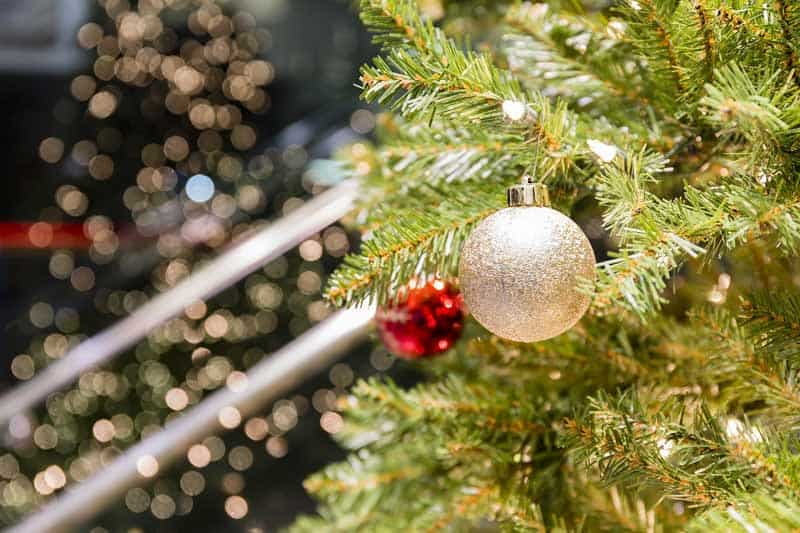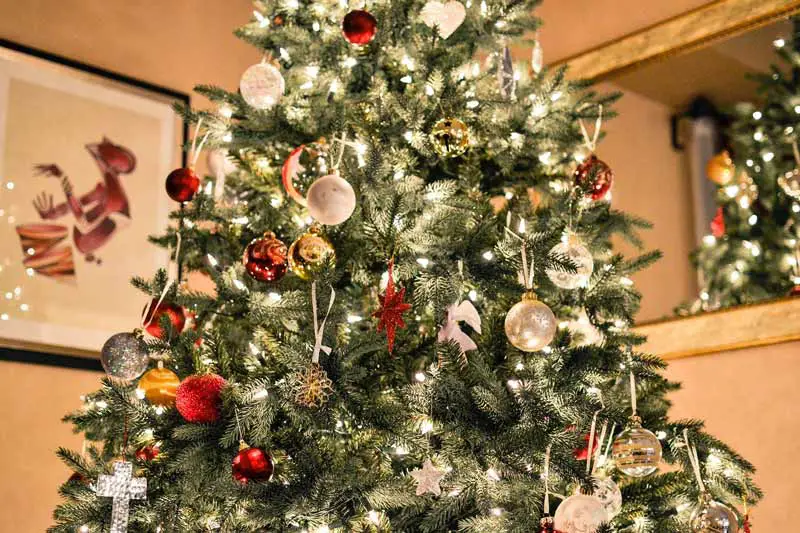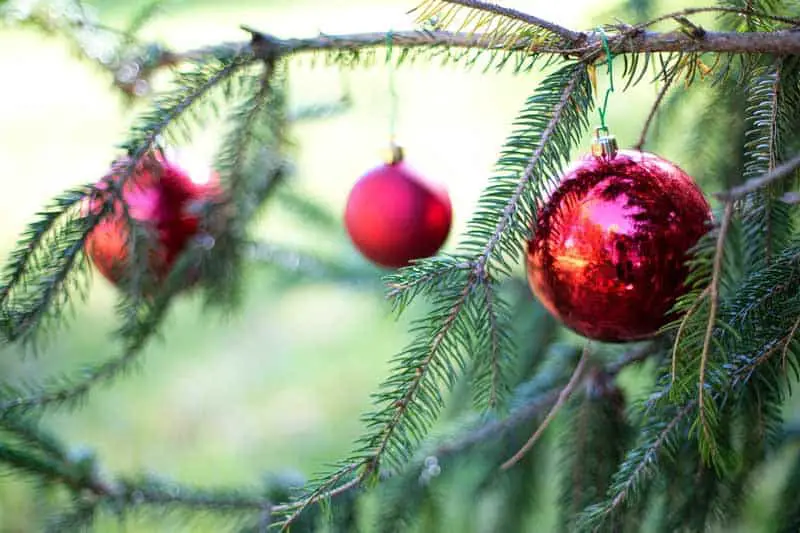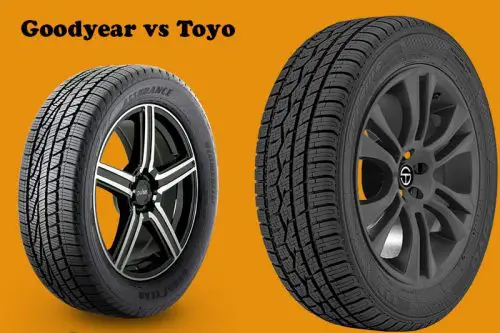Hanging Christmas Lights on Outdoor Trees?: It is that time of the year when streets all over the world look like they have been taken out of a fairytale, adorned with whimsical Christmas lights. Even though we love to see it all, there is a lot of effort that goes behind bedazzling trees with Christmas lights. It can prove to be a complicated process, but we are here to walk you through it.
It’s never too early to start decorating and get in the spirit.
Inspiring your journey, one story at a time. #LifeFalcon.
The moment Halloween wraps up, a lot of us start to feel the holiday spirit kicking in. Hot chocolate every single night, sugar cookies in the oven, Christmas stockings up on the fireplace, and of course, my personal favourite, retrieving bags and bags of Christmas decorations from the dustiest depths of the garage and the attic.
The Christmas tree, ornaments, snow globes, candy canes, wreaths, and the life of the party, without which Christmas remains incomplete, lights add the spark of joy that life has been deprived of through the year.
If you do not enjoy decorating for Christmas from the literal first day of November, you are the most boring person on Earth. I am sorry, but I don’t make the rules here.
And this year Christmas is going to come as a big wave of happiness because 2020 is finally about to end.
Perhaps the toughest year to date, surely we are counting the days till 2020 decides to pack its bags and leave us alone.
And if you are trying to add a pump of excitement to the mundanity of your life, let us inform you that decorating earlier can get those serotonin taps opened up inside your brain and might help you feel happier.
In fact, if trees dolled up with lights makes the air feel magical and you happier, then we say keep them there for the whole year! We deserve it all, haha!
Nevertheless, whenever you find it appropriate to start decorating, whether it be on the first day of November, or just a few days before Christmas, decorating can prove to be a rather tedious process.
Especially if you have tall trees in the front yard, waiting to receive their share of love and attention from you.
Table of Content
What’s the Mechanism?

Decorated trees are a fresh breath of air to the air and to the heart, however there is a specific set of rules that one has to follow while glamming them trees up.
There are mainly two large groups which trees can be divided into. These are deciduous trees, which include oak, maple, beech, birch, etc. These trees are huge flowering plants which shed their leaves every year in fall.
The second type is evergreen trees which, as the name suggests, are evergreen, and never shed their leaves off. All season beauty as we like to call it. Examples of evergreen trees are pine, fir, hemlock, cedar, etc.
The kind of tree in question will greatly determine the process that you have to apt while decorating it. Aspects like framework, size, visual aspect, etc need to be considered when decorating either type and these will be discussed later on.
As for the process, the basic steps are quite simple. There are three kinds of wrapping methods from which you can choose. Whichever floats your boat, depending on the tree, the lights, and the effort you are willing to put in.
-
Globe wraps
The first wrapping technique is something known as the ‘globe wrap.’ It is perhaps the most popular technique of all, which is why some of you may have already realized what we are talking about.
Globe wrapping is done by taking lights (of course) and wrapping them starting from the button up, around the tree in a horizontal manner. The string of lights is allowed to rest on appropriate branches, with the desired degree of slack.
Ladders, extension poles, or both can be used to wrap taller trees. As far as suitability is concerned, this kind of wrapping is okay for both deciduous and evergreen trees.
5mm and C6 lights are perfect for deciduous trees, whereas evergreens can also be decorated with C6. Extraordinarily huge evergreens, however, may require C7 and C9 lights.
It’s a universal, moderately difficult method that can make your trees look absolutely magical.
-
Trunk and limb wraps
The second method of hanging Christmas lights on your tree is wrapping them around the tree trunks.
This technique, however, is only suitable for deciduous trees due to the ‘nakedness’ of their trunks.
The trunks of evergreen trees, as we know, are covered with plush and dense needle-like leaves, which do not let the stem expose.
Wrapping the trunks and limbs of deciduous trees can be a great way of enhancing the tree’s natural shape by illuminating it. This is done by wrapping the lights tightly around the tree trunks and some limbs of the tree to give it the breath of life.
To avoid using way too many lights, wrap it around evenly and leave more space between wraps instead of overlapping them or wrapping too closely .
This will also facilitate you when you are about to remove the lights from the tree by getting the job done in half as much of time.
-
Vertical wraps
The third kind of wrapping is known as a vertical wrap.
This kind is a great choice for evergreen trees and helps to flawlessly give a magical touch to them.
All light strands start at the top of the tree, with the main branch as a support and fall down the tree vertically.
Multiple strands can be hung by placing them at equal spaces from each other to give a more put together look.
C7 and C9 bulbs work best with this kind of arrangement.
Be ready to be blown away by the mystical results.
If for example, your tree is super tall and your lights are not able to reach to the base of the tree completely, then use the hack of connecting the lights with some sort of extension and connect that extension to the top of the tree.
As the day gets dark, nobody will be able to tell that the lights are not connected to the top.
Whatever method you choose, and whatever tree you have, there is no doubt in the fact that trees lit up with Christmas lights look like a picture pulled directly out of a fairy tale and will surely transform your garden into the grounds of dreamland.
What’s the deal with different kinds of trees?
For most trees, it is suitable to light them up, deciduous, palms, and even evergreen trees can be bestowed with the prettiest looking lights and be made to look gorgeous.
However, there are certain factors that one has to consider while taking up this fairly technical job.
It definitely is not as simple as you think if you have never done it before.
For those who have, you guys know what I am talking about.
-
The framework of the tree in question
The first aspect where deciduous and evergreen trees drift apart from each other is the factor of the difference of the physiques of these trees.
This is because the framework of a tree is directly proportional to and immensely affects something known as the tree’s light penetration.
Evergreen trees need to be lit up in a different manner than deciduous trees. In a situation involving deciduous trees, the light is able to penetrate through the branches and leaves of the tree and travel up the canopy because of the lighter, see through, and rather ‘nakedness’ of deciduous trees.
Evergreens, on the other hand, are a lot thicker and have leathery structures, with very dense leaves.
If such a tree was to be lit in the same manner as a deciduous one, then the light rays would only be capable of traveling a mere couple feet until getting dispersed.
The thick, needle-like leaves of evergreen trees will prohibit the light from travelling up to the canopy and would stay caught in its immediate position only.
If you light an evergreen tree from the bottom, then the light will be obstructed and dissipated before it gets the chance to run up to the top of the tree.
This will result in an extremely bright base and a darker top, and we surely do not want that.
Such trees need to be lit from a moderate distance of three to ten feet back from the tree’s trunk with a 60-100° beam spread.
Even though this distance is good enough, it will ultimately depend upon the size of your tree.
The distance is directly proportional to the size of the tree, the larger it is, the more distance will be required.
-
The type of your lights
In order to decorate a tree, the first thing you need after a tree, are lights. And there is a simple science behind choosing the right kind of lights for your particular tree.
Let it get out of the way first that it is best to use LED lights.
Even though they may be a little expensive to buy, they are 75% more energy efficient and tend to last longer than standard bulbs.
Make the investment now so you can stay care free for the years to come.
When it comes to the color of your lights, it is largely the user preference, however, if you really want to follow soft rules, warm white LEDs provide the traditional warm yellowish light that everyone has been in love with as far as we can remember.
On the other hand, cooler LEDs will provide a more bluish look which seems fine, but it’s not usually used.
The third option is colored lights which come in both a single color or multi colors. Whatever you end up choosing, it is most advisable to select lights of the same hue. That is, all warm colors or all cool colors if you pick colored lights.
Another thing to note is that if you are decorating a deciduous tree, you will not need as many lights as you would for an evergreen tree like conifer, alpine, etc. This again related to the framework of the tree. Since evergreens have a thicker look, more lights will be needed in order to make them more noticeable, whereas deciduous trees will look great even with a few strands.
-
The visual aspect
The last thing to keep in mind when decorating trees is how the trees need to look like depending upon their location.
If the tree is in your backyard, you may not have to decorate all of it or just leave it empty for that case because nobody will really get to see it.
Meanwhile, if the tree is in your front yard, visible in sight to anyone and everyone who passes by your house, then you may want to put in a little effort.
And by more effort we mean more lights.
Size and type of tree again comes in for this aspect. If the tree is bigger, you will want each part of it to look as radiant as possible.
Which is why you can either get a greater amount of lights or brighter LEDs to make them pop against the thick leaves if you are decorating an evergreen tree.
Let’s ‘wrap’ this up, shall we?

Whether you are up against a deciduous tree, or an evergreen one, decorating for Christmas is something that can never fail to put a big smile on your face.
Unless you are Scrooge, lol.
Just follow these tips to bring your trees to life accordingly, and get ready for the holidays!




















